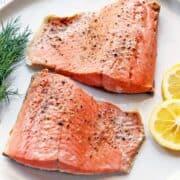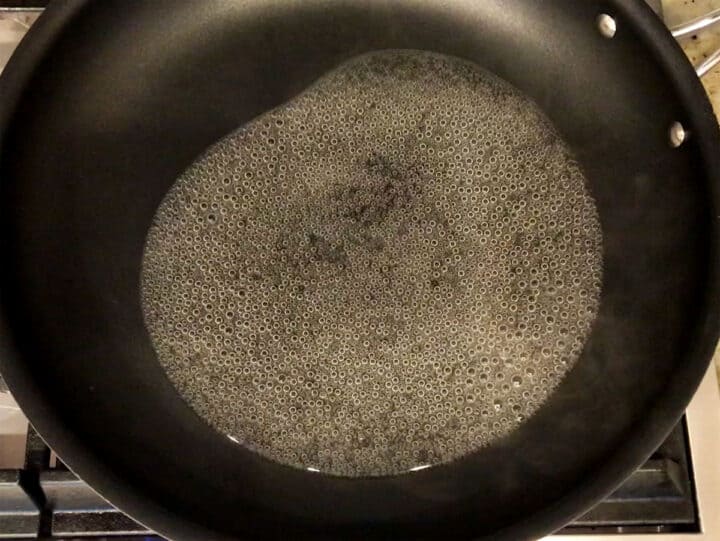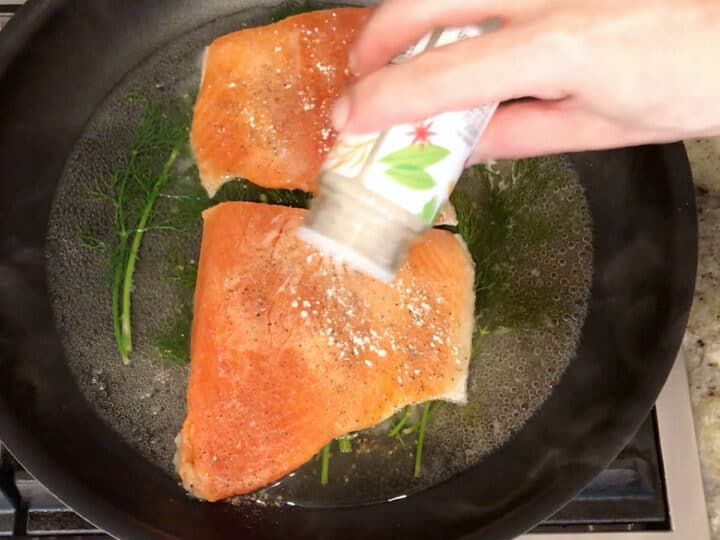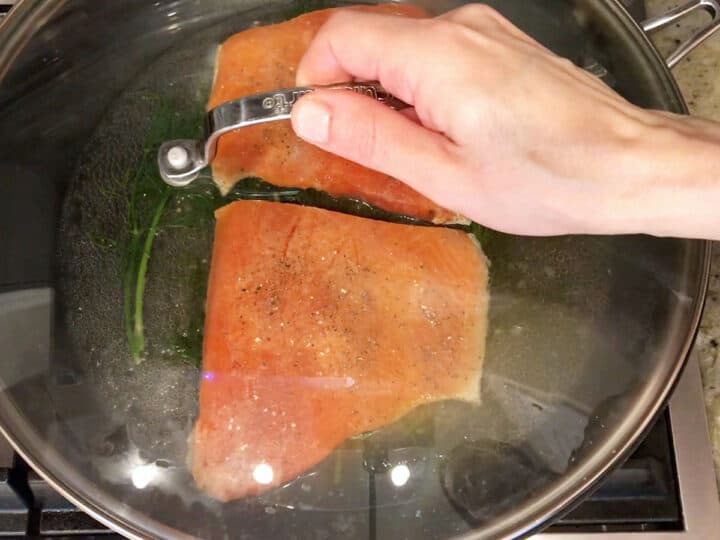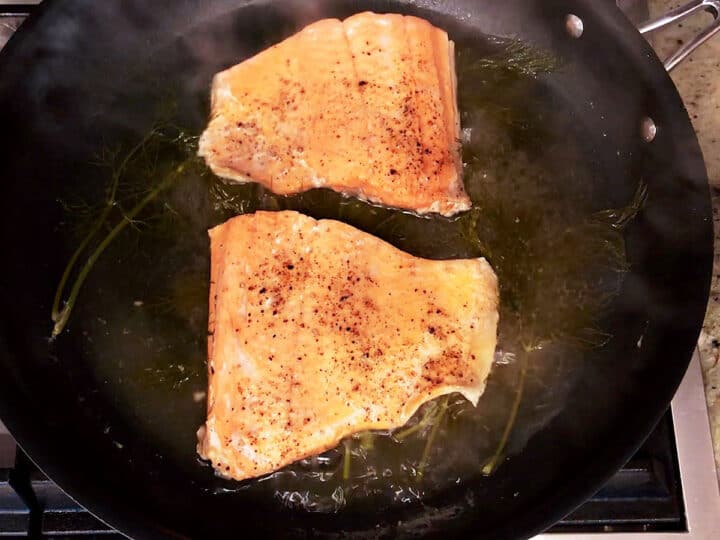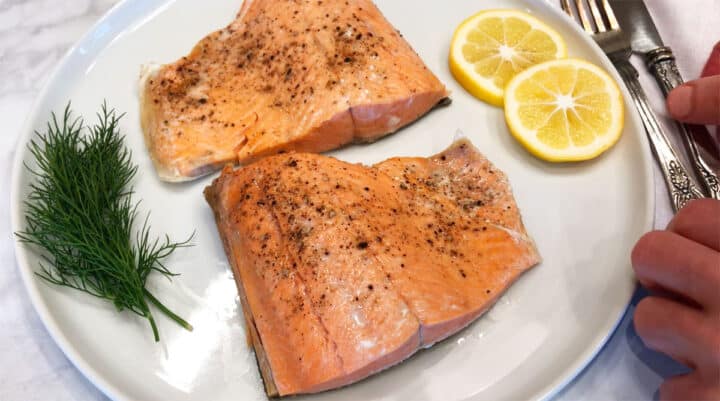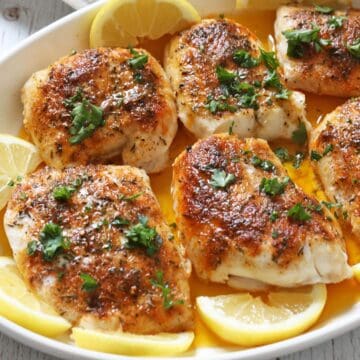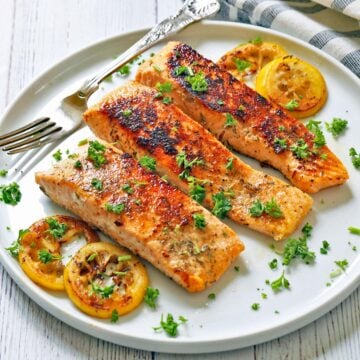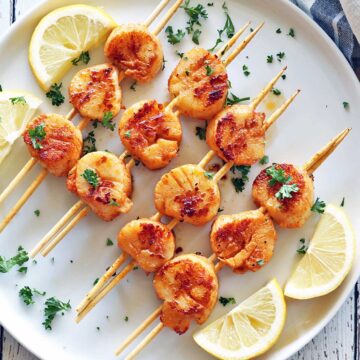Poached salmon is wonderfully moist and delicate. This easy recipe takes just 20 minutes, making it the perfect stress-free weeknight dinner.
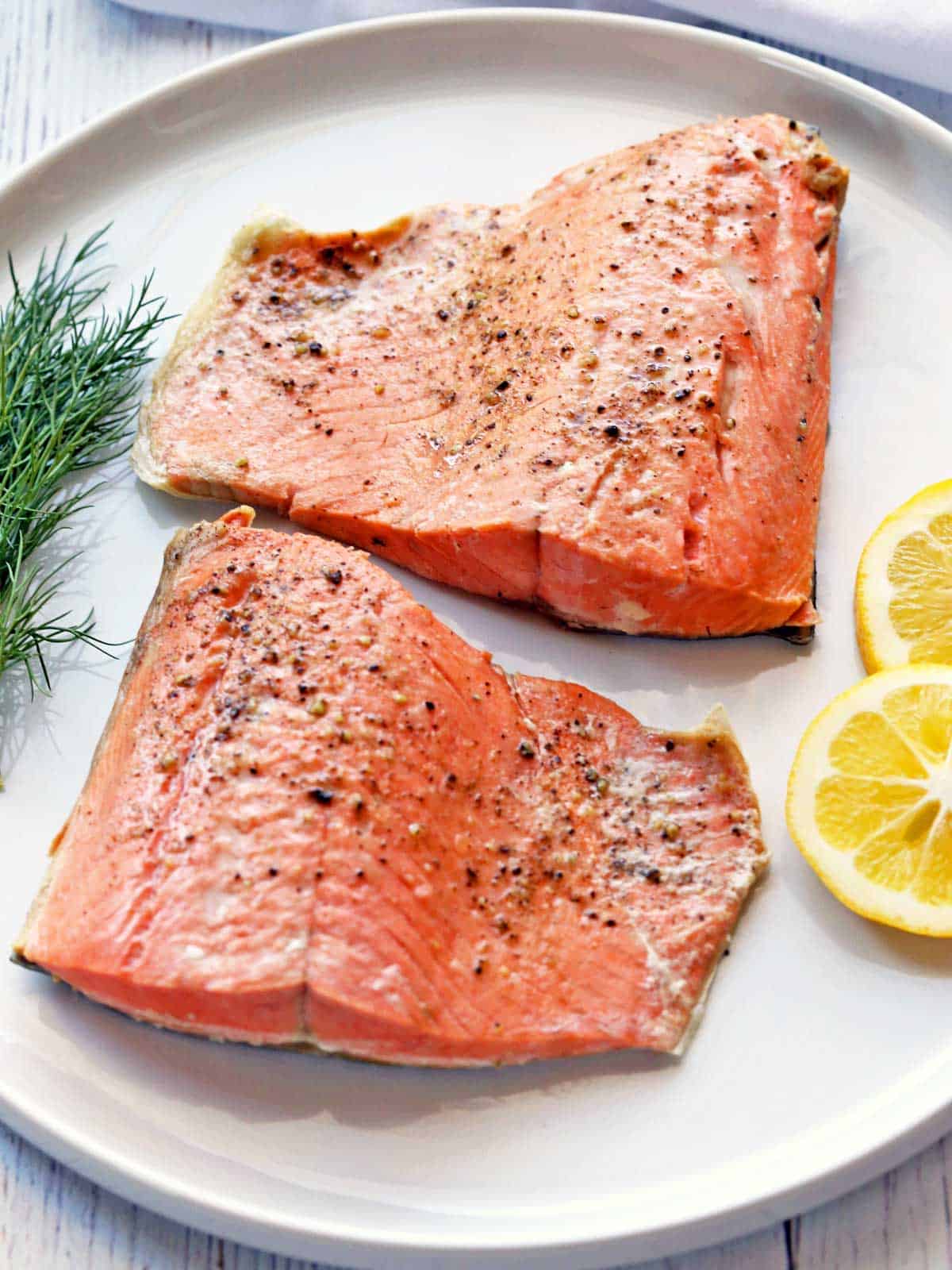
I enjoy several salmon recipes, such as pan-fried salmon, baked salmon, and grilled salmon. But poaching is one of my favorite ways to cook this fish. Poaching is a gentle cooking method that yields tender, flaky fish. It retains moisture and allows the flavor of the fish to shine through. You can poach the salmon in white wine and serve it warm with hollandaise sauce or cold with tartar sauce.
Ingredients
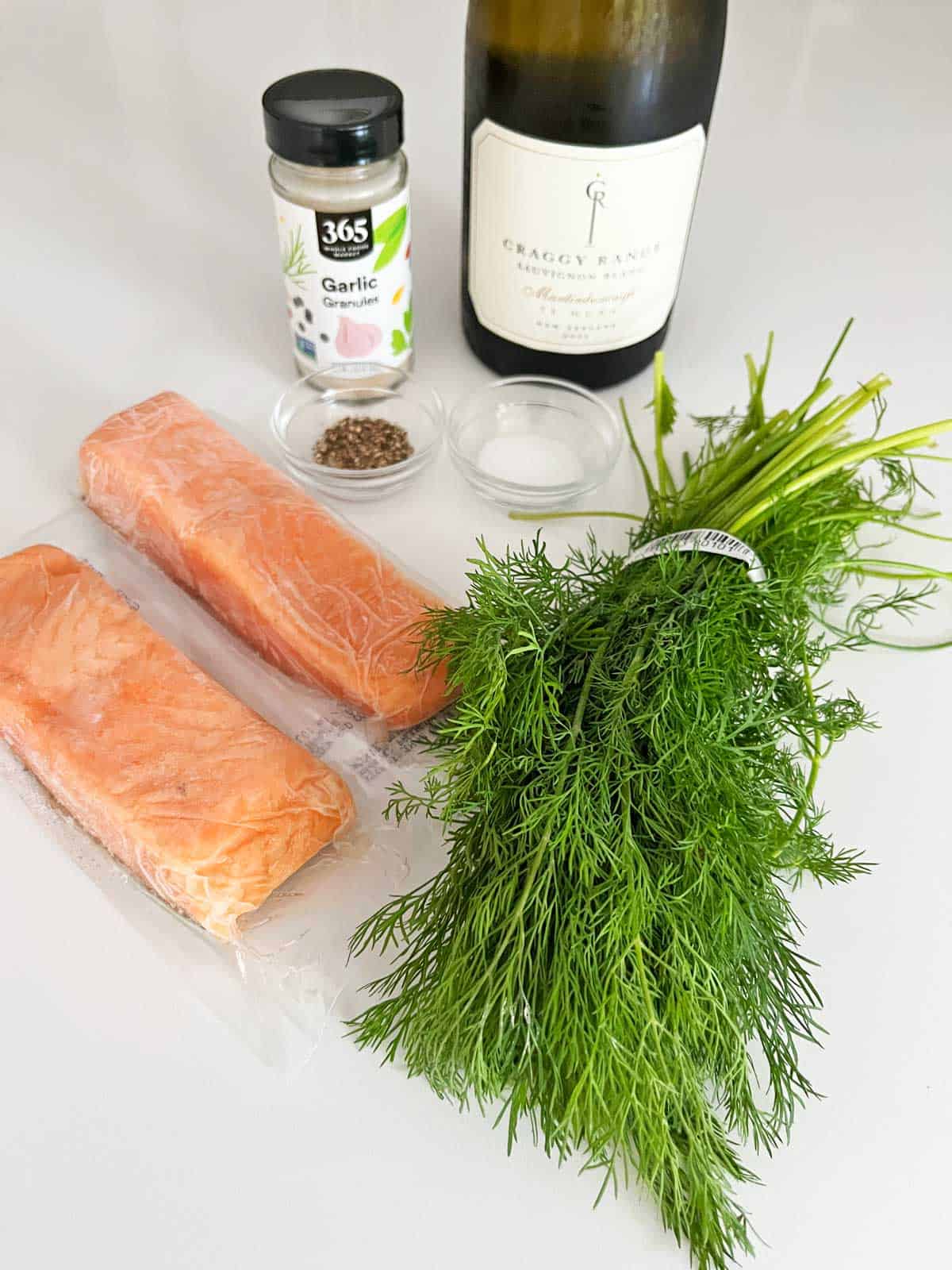
See the recipe card for exact measurements. Here are my comments on some of the ingredients.
- Dry white wine: Sauvignon blanc works well, as does pinot grigio. Both of these wines can also be served with this dish.
- Dill: I place it at the bottom of the pan, then place the fish fillets on top.
- Salmon fillets: I made this recipe with wild-caught salmon and responsibly farmed Atlantic salmon. Both worked equally well.
- To season: Kosher salt, black pepper, and garlic powder.
Instructions
The detailed instructions and step-by-step photos are included in the recipe card. Here's a quick overview.
Pour the wine into a large, lidded skillet. Bring it to a simmer over medium heat. Place the dill in the skillet, reserving a few sprigs for garnish.
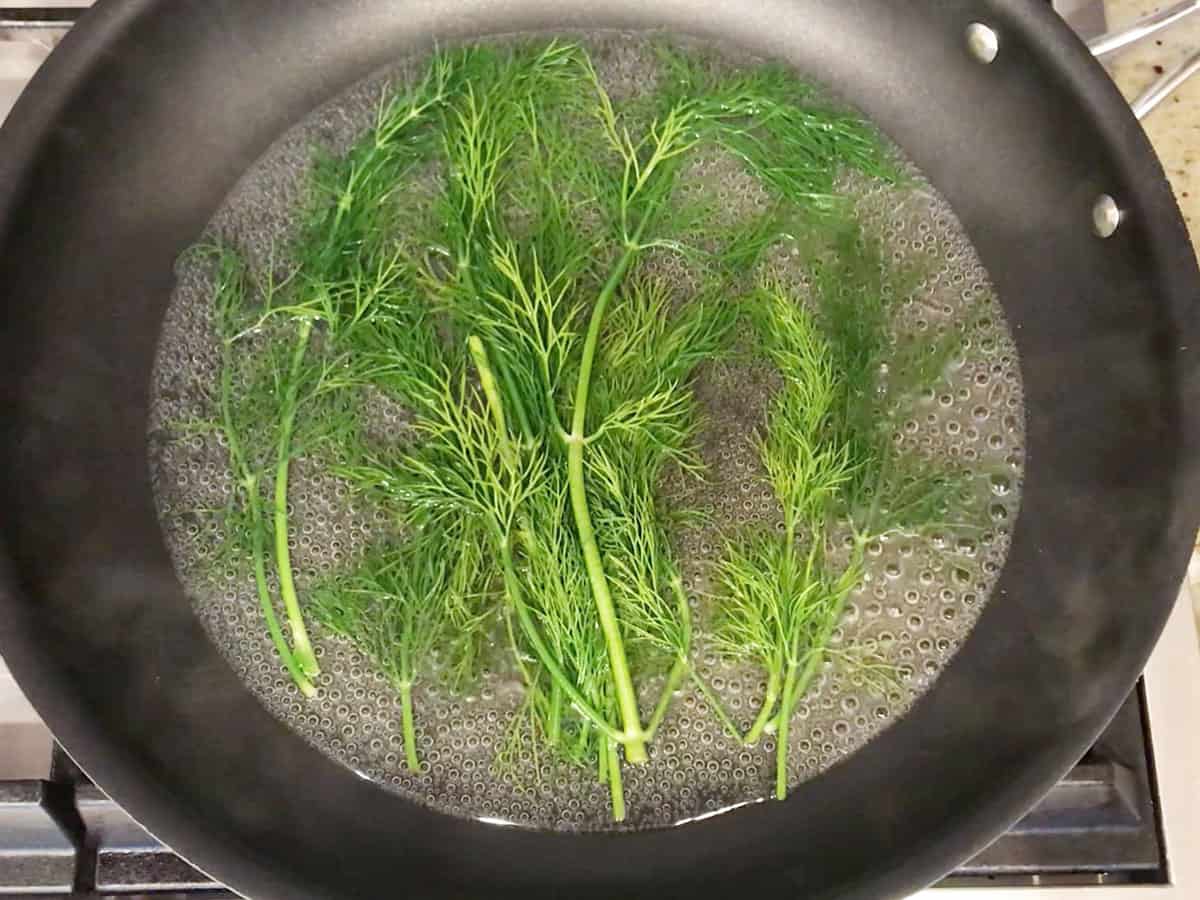
Place the salmon fillets, skin side down, on top of the dill. Sprinkle them with salt, pepper, and garlic powder. Cover the pan tightly and poach the salmon until cooked through, for 5-10 minutes.
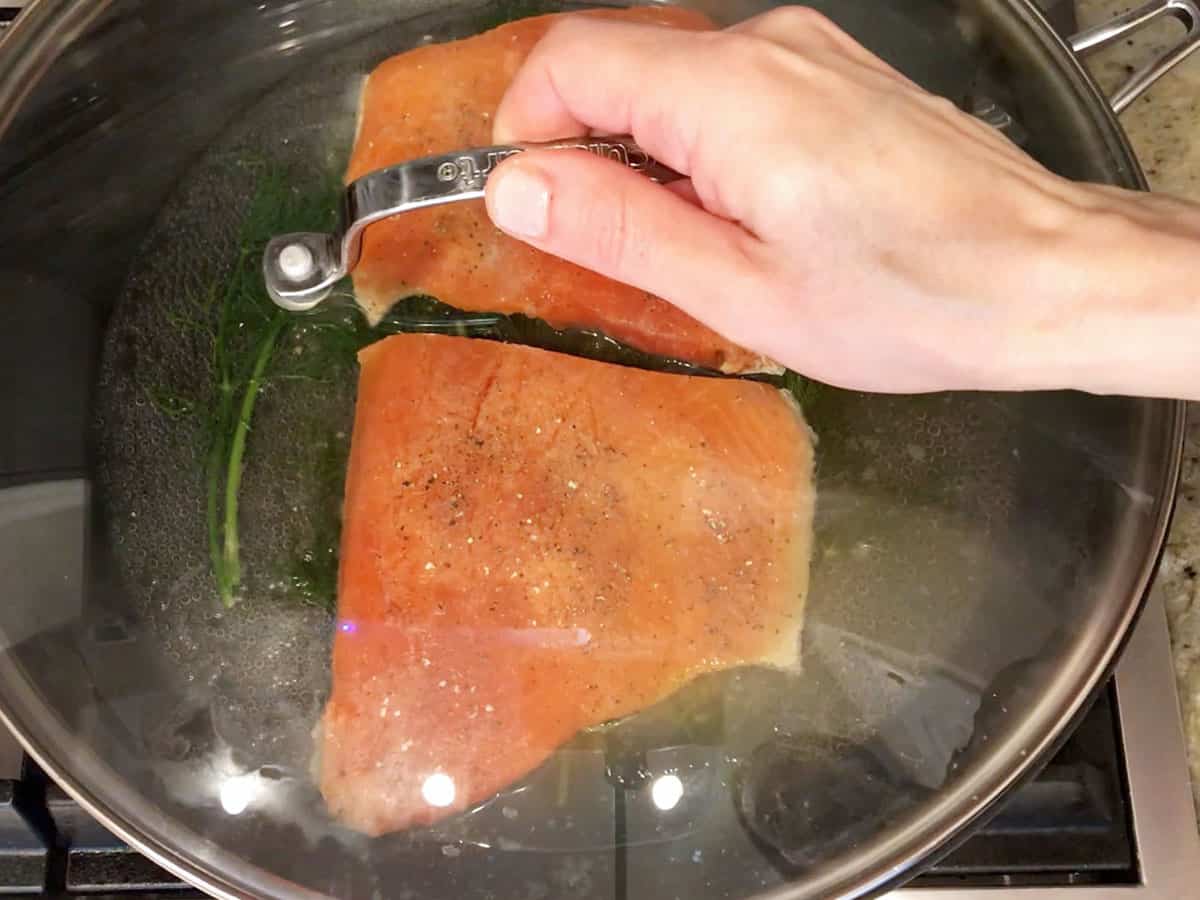
Serve immediately.
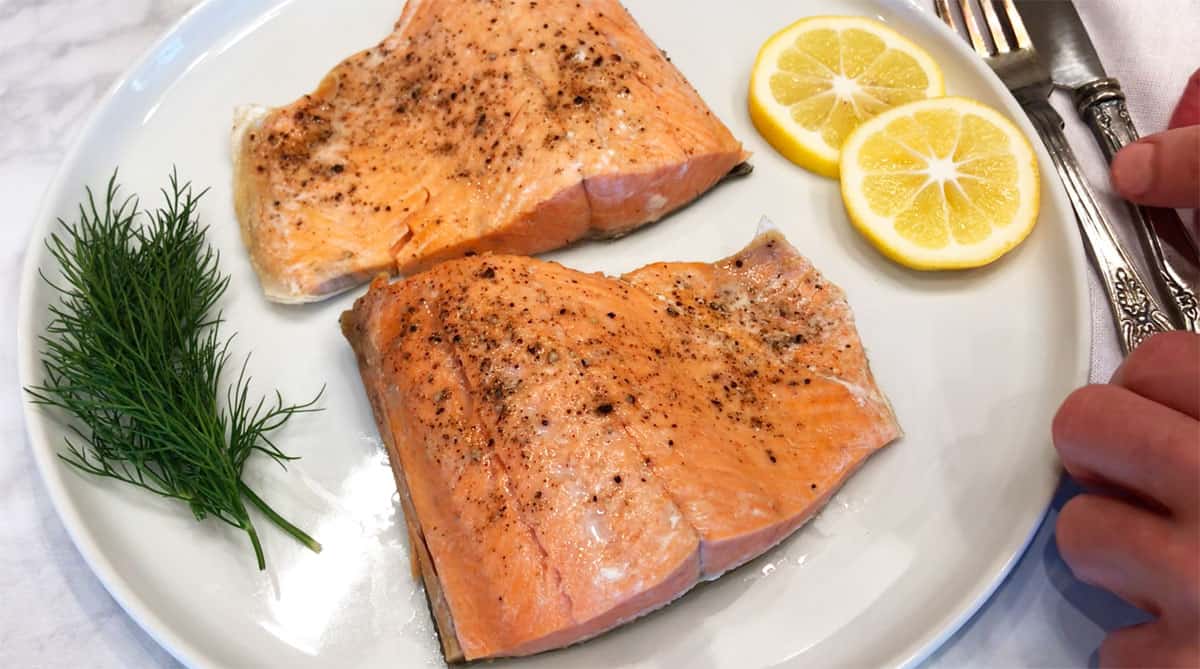
Recipe Tips
- To ensure the salmon poaches rather than boils, maintain a gentle simmer rather than a rolling boil. If needed, reduce the heat to medium-low.
- I prefer garlic powder to minced garlic because it coats the salmon more evenly.
- Feel free to experiment with different poaching liquids and see which of them you like best. Good candidates include dry white wine, fish stock, milk, or simply water. After many experiments, my preferred liquid is white wine. I like the flavor it adds. But you should experiment and see what you like best.
- While the skin won't crisp up the way it does when you bake salmon or make pan-fried salmon, it will keep the fish moist. I like the fatty poached skin, but you can remove it after cooking.
Serving Suggestions
Poached salmon is delicious when served warm, drizzled with melted butter, or topped with hollandaise sauce. You can also serve it chilled, with mayonnaise, sriracha mayo, or homemade tartar sauce.
As for side dishes, this dish is very versatile. It goes well with most vegetables. When I serve it cold, I often serve it with asparagus salad, cucumber salad, or broccoli salad. When I serve it warm, I accompany it with steamed broccoli, steamed asparagus, or steamed spinach.
Storing and Using the Leftovers
You can keep the leftovers in a sealed container in the fridge for up to three days. I don't like to reheat them. They become dry, and their flavor suffers. Instead, I flake them and add them, cold, to a salad the next day for lunch. They make an excellent topping for this arugula salad and can replace the chicken in this Cobb salad.
I often make a quick salad of shredded lettuce and cherry tomatoes, add the poached salmon leftovers (flaked or cut into small pieces), and drizzle the salad with ranch dressing, as shown in the photo below. Another option is to mash the leftovers with additional ingredients, such as mayonnaise, and turn them into a salmon salad.
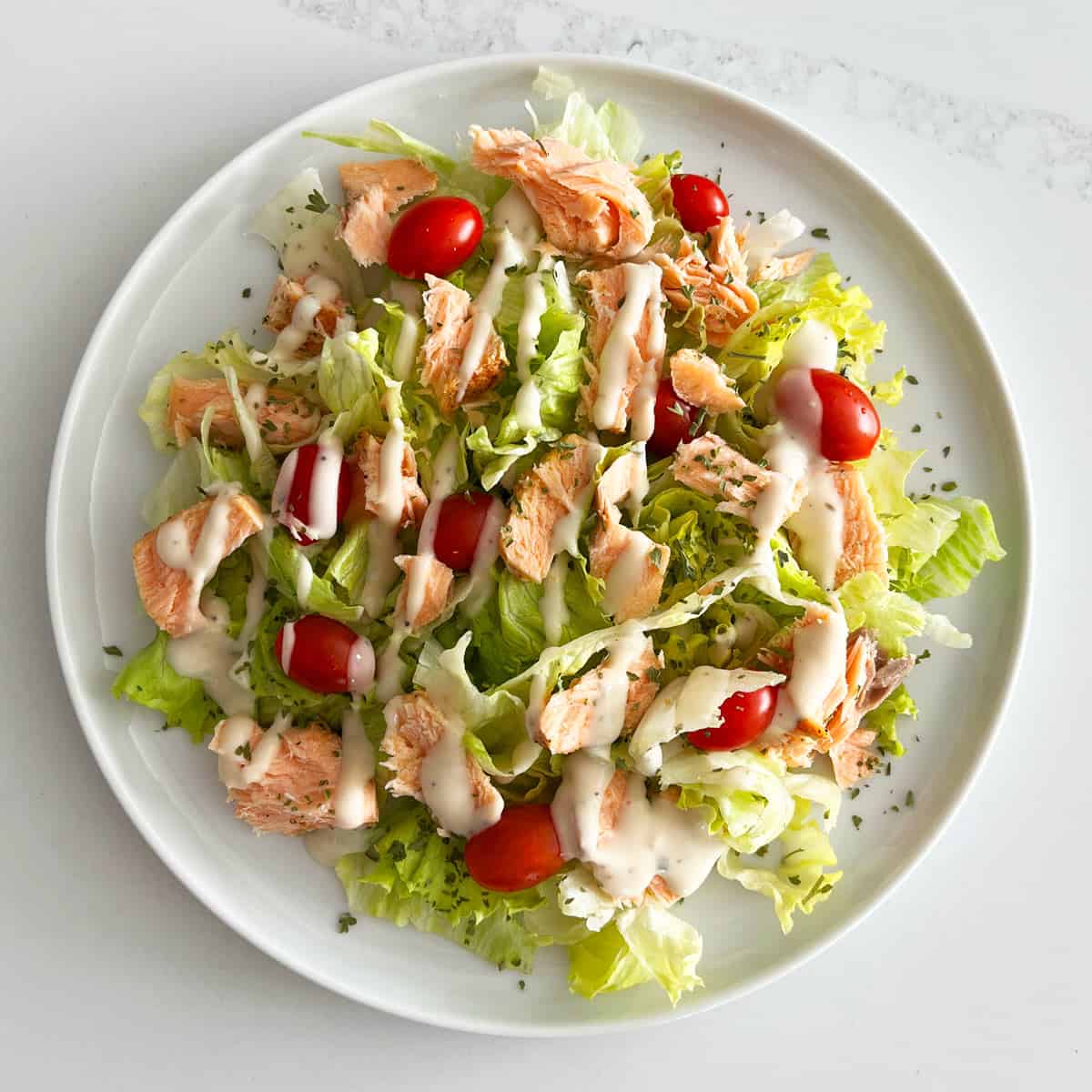
Recipe Card
Easy Poached Salmon
Video
Ingredients
- 1 cup dry white wine
- 1 bunch dill weed
- 2 salmon fillets - 6 ounces each, pin bones removed
- ½ teaspoon Diamond Crystal kosher salt - or ¼ teaspoon of any other salt
- ¼ teaspoon black pepper
- ¼ teaspoon garlic powder
Instructions
- Pour the wine into a 12-inch lidded skillet. Bring to a simmer over medium heat.
- Place the dill weed in the skillet, reserving a few sprigs for garnish. Place the salmon fillets on top of the dill, skin side down. Sprinkle the salmon with kosher salt, black pepper, and garlic powder.
- Cover the pan tightly with the lid or a double layer of foil.
- Poach the salmon until it's no longer raw in the thickest part, for 5-10 minutes, depending on its thickness. It should reach an internal temperature of 145°F.
- Serve the salmon immediately (with hollandaise sauce if you wish), or chill it for at least 2 hours and serve it cold with mayonnaise or tartar sauce.
Notes
- I made this recipe with wild-caught salmon and responsibly farmed Atlantic salmon. Both worked equally well.
- A skillet with a clear lid works best, allowing you to peek inside and check on the salmon.
- The liquid should cover the bottom of the pan - add water if needed. You can use fish stock instead of wine or simply use water.
- Feel free to experiment with different poaching liquids and see which of them you like best. Good candidates include dry white wine, fish stock, milk, or simply water. After many experiments, my preferred liquid is white wine. I like the flavor it adds. But you should experiment and see what you like best.
- Make sure to maintain a gentle simmer rather than a rolling boil. If needed, reduce the heat to medium-low.
- You can keep the leftovers in a sealed container in the fridge for up to three days. I don't like to reheat them. They become dry, and their flavor suffers. Instead, I flake them and add them, cold, to a salad the next day for lunch.
Nutrition per Serving
Save this Recipe!
We will also add you to our weekly newsletter. Unsubscribe anytime. See healthyrecipesblogs.com/privacy/ to learn how we use your email.
Disclaimers
Most recipes are low-carb and gluten-free, but some are not. Recommended and linked products are not guaranteed to be gluten-free. Nutrition info is approximate. Please verify it independently. The carb count excludes non-nutritive sweeteners. Please read these Terms of Use before using any of my recipes.

